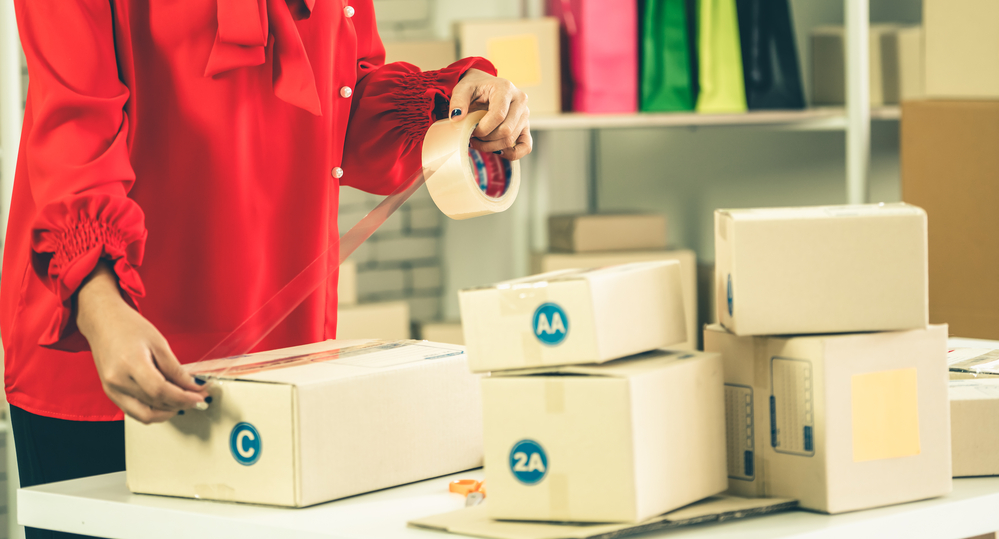The ecommerce arena is dynamic, undergoing more evolutions than a Pokemon. The direct-to-consumer order fulfillment shift has reshaped the playing field, prompting Shopify store owners to exceed order delivery expectations to keep shoppers smiling and increase business.
In this quick guide, Box Builder explores the fundamentals of direct-to-consumer fulfillment, delves into popular delivery options, and provides practical tips to streamline order completion. Learn how to ensure quicker, more efficient deliveries.
Direct-to-Consumer Fulfillment: Understanding D2C Ecommerce
With direct-to-consumer fulfillment distribution, store owners ship products directly from the manufacturer or fulfillment center to the consumer. This strategy eliminates intermediaries, giving you more control over the customer experience.
The distribution model’s advantages include increased profit margins, better brand control, and building direct customer connections.
In-Demand Options for D2C Fulfillment
You have as many options for your fulfillment strategy as there are Starbucks in a single city. Understanding the nuances of each solution affects your shop’s efficiency and customer satisfaction.

Familiarize yourself with Shopify’s most popular direct-to-consumer fulfillment methods. From in-house options and third-party logistics to dropshipping and print-on-demand services, each has its value:
- In-House Fulfillment: This hands-on approach involves managing your inventory, packing, and shipping directly from your location. While it gives you the most control over fulfillment, it requires careful planning and the right resources.
- Third-Party Logistics: Partnering with a 3PL provider may streamline fulfillment, but depending on the provider, you might face challenges like limited influence regarding product handling, potential delays, or additional fees. The upside is the provider handles warehousing, packing, and shipping, so you can focus on growing your business.
- Dropshipping: To minimize upfront costs, consider dropshipping. Although it’s an attractive option, it comes with trade-offs, such as less oversight of inventory and shipping times.
- Print-on-Demand Services: An innovative fulfillment model involving manufacturing products as you receive orders, print-on-demand eliminates the need for inventory storage. Still, you could encounter longer production times, leading to delayed order fulfillment. Additionally, end product quality depends on your printing partner.
Evaluate the pros and cons of each option based on your business model and goals. With a customized D2C fulfillment strategy, you encourage customers to become loyal shoppers.
Tips for Fulfilling Orders Faster
Efficiency is the secret sauce in the direct-to-consumer-fulfillment recipe. Here are actionable tips to expedite order processing and satisfy shoppers:
- Build Trust: Keep customers coming back with reliable, speedy fulfillment. Surpassing customer expectations may lead to positive reviews, repeat business, and word-of-mouth referrals.
- Optimize Inventory Management: Use Shopify’s inventory management tools to track stock levels and prevent ordering more items than necessary and overstocking. Real-time visibility helps you fulfill orders accurately and promptly.
- Automate Order Processing: Leverage Shopify’s automation tools to streamline order processing. From order confirmation emails to shipping notifications, automation reduces manual errors and accelerates fulfillment.
- Strategic Warehousing: If you use a 3PL, store inventory strategically to minimize shipping distances. This reduces transit times and lowers shipping costs.
- Invest in Technology: Consider integrating your Shopify store with fulfillment technology. This could improve order accuracy, give you real-time tracking information, and improve your store’s reputation.
See More Direct-to-Consumer Fulfillment Tips From Box Builder
Mastering direct-to-consumer fulfillment on Shopify demands a combination of knowledge, skill, authority, and reliability. But elevating your ecommerce game and providing an unforgettable shopping experience doesn’t end there. Contact Box Builder if you’re ready to harness the power of custom gift boxes for everything from increased brand identity and marketing to customer satisfaction.


